The 4-2-3-1: football tactics explained
THE 4-2-3-1 FORMATION IS ARGUABLY THE MOST FLEXIBLE FORMATION IN FOOTBALL IT CAN SHIFT TO A NUMBER OF OTHER SHAPES WHEN IN SPECIFIC MATCH SITUATIONS (4-4-2, 4-3-3, 4-5-1, 4-4-1-1).
Where does the 4-2-3-1 originate?
With many teams using a withdrawn centre-forward in a 4-4-2 in the late 1990s, the 4-2-3-1 was eventually introduced in the 2000s to prevent access into central spaces between the lines. This initially stemmed from having a single pivot covering these spaces – Claude Makélélé was the most notable of these – before a second defensive midfielder was added ahead of the back line.
This formation became more popular as pressing became a bigger part of the modern game. The double pivot covers the space in front of the back four but also supports the press behind the centre-forward and attacking midfield three. Manchester City assistant manager Juanma Lillo is thought to have instigated the change from 4-4-2 to 4-2-3-1 in Spanish football, with the high press a significant contributing factor.
4-2-3-1 Game Model
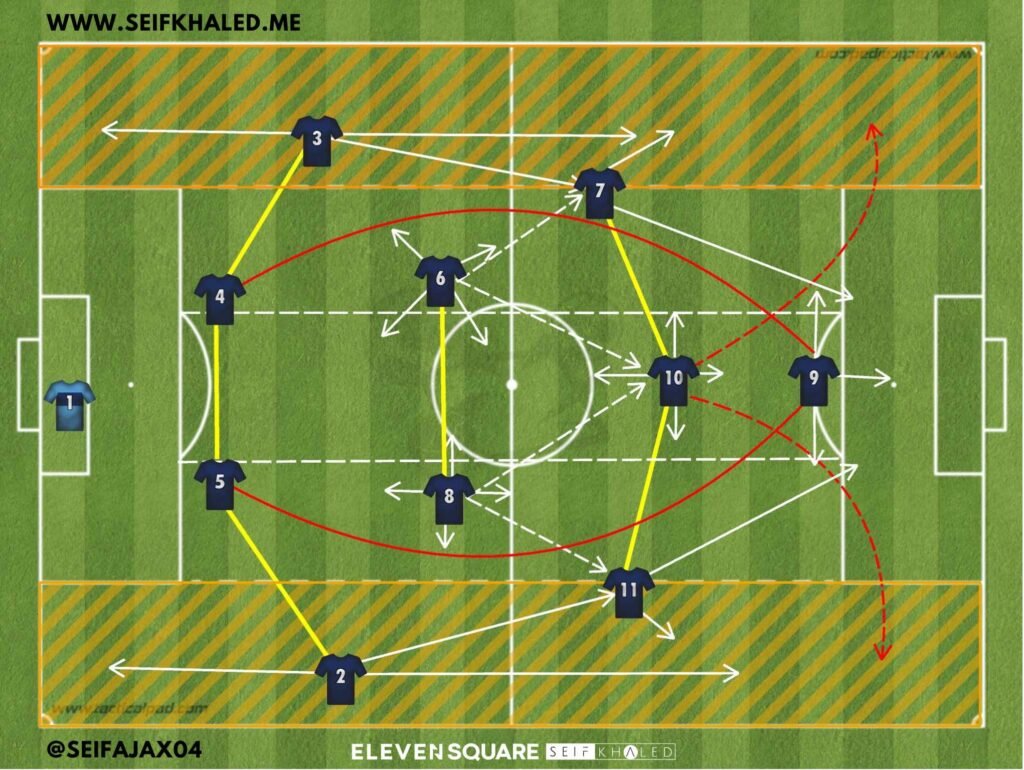
4-2-3-1 formation strengths Points
- The 4-2-3-1 is a very flexible strategy that can adapt its shape to fit a specific match situation.
- The 6&8 offer added protection to the back four, and can cover more space laterally to screen the defense.
- The double pivot offer good passing angles when building the attack from dee
- The number ten in this system is the link from the deeper midfielders to the forwards.
- The system promotes a natural number 10 position in zone 14.
- The wider players (FB&WM’s) act as a pair for extra defensive cover to protect against an overload out wide.
- The FB’s can be given more licence to attack with the inclusion of two deeper midfielders.
- WM’s can invert to create overloads in the half-space with width offered by FB’s.
- The CF is supported by three attacking midfielders.
4-2-3-1 formation Weakness Points
- The defensive solidity relies a lot on the deeper midfielders. a lack of discipline can lead to spaces opening up between the defensive lines.
- The system can become vulnerable to a defensive transition. especially in wider areas, should the FB’s make attacking runs, supporting the WM’s.
- The link between midfield and forwards can become disjointed if the number 10 is ineffective.
- The system can be vulnerable to playing against a three man midfield set-up i.e a 4-3-3 especially when the 4-2-3-1 defends in a 4-4-2 shape. this leaves a 3v2 overload in the midfield.
- The CF can become isolated when the 4-2-3-1 defends in a mid/low block.
UTILISING THE high PRESS IN A 4-2-3-1
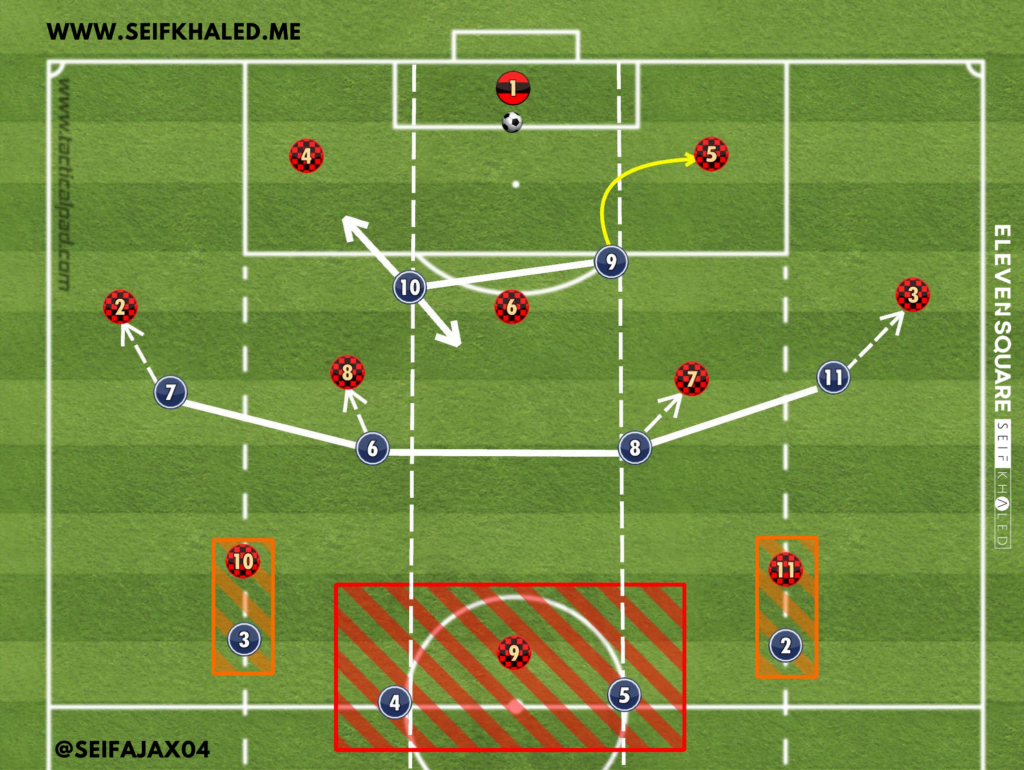
Key FACTORS:
1. As per the flexibility in a 4-2-3-1 shape, when defending it can shift to a 4-4-2 shape with the number 10 moving alongside the CF.
2. The shape promotes a man-oriented structure with the CF/10/WM’s accounting for the opposition cb’s and FB’s.
3. The 4-4-2 presents a natural pressing trigger when the ball is played into the FB’s. the touchline can then be used as an extra defender to force a turnover, or another pressing trigger can be initiated by the square pass back into the CB
4. When the initial line of engagement is played through, the number 10 can retain a position off of the CF to track the pivot player, but is still in a position to step up and press the square pass to the CB.
5. The two deeper midfielders are in a position to track the more advanced opposition midfielders.
6. The FB’s in this set-up are narrowed to account for the opposition wingers.
7. Should the opposition play a longer pass into the forward, the CF is accounted for by the two CB’s.
COMPACT DEFENDING ENDING IN A 4-2-3-1 MID/LOW BLOCK
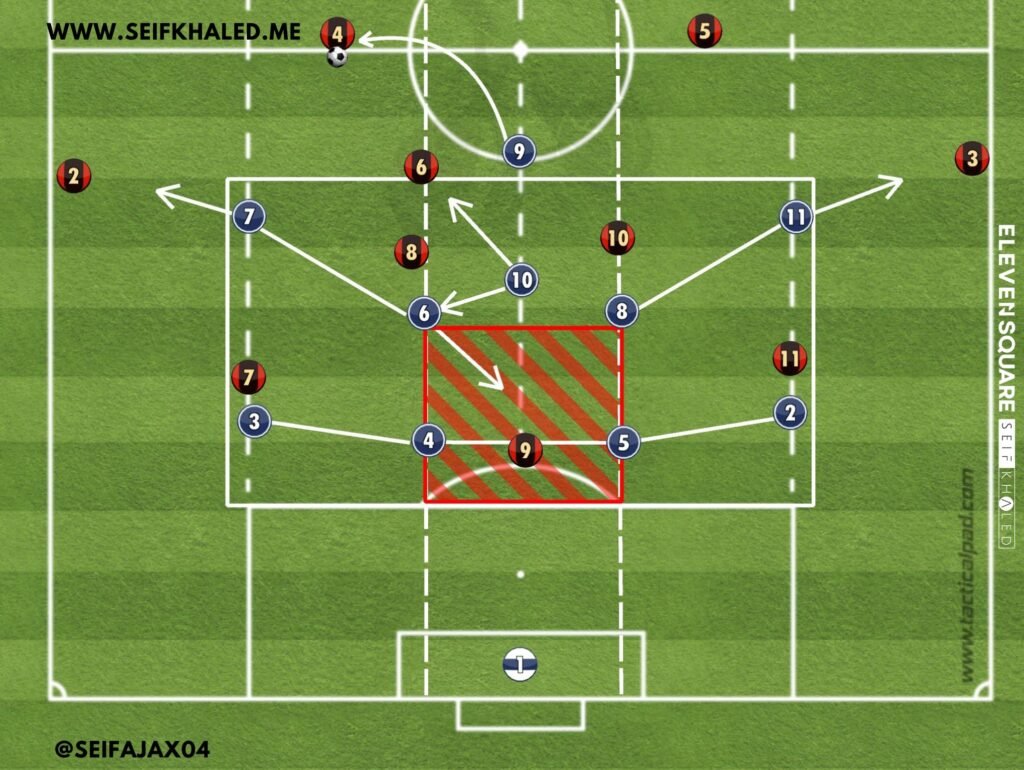
Key FACTORS:
1. Maintain vertical compactness, limiting the space in between the lines.
2. Cf should look to position to engage forcing the opposition into wider areas and outside the defensive block.
3. The cf should still retain a high starting position to be an option when entering an attacking transition. This gives the best chance of starting an attack from a deep defensive position.
4. When ball is with an opposing player in a wide area, the team should shuffle as a unit to overload the ball side to make it hard to penetrate, forcing the opposition backwards.
5. The shape can even shift to a 4-1-4-1 with the six dropping deeper and the number ten filling in to that position. This is to zonal mark zone 14 (highlighted in red).
6. The wide players (7&11 and 2&11) must be quick to shuffle wider when the ball is played into those areas, to prevent a forward pass.
7. When in the mid/low block, the players should be looking to maintain their zonal marking responsibilities. Marking the space instead of a particular player, this is to ensure that a specific players movement doesn’t draw them out of position.
WHEN IN A MID/LOW BLOCK, IT IS ABOUT MAKING IT AS HARD AS POSSIBLE TO PENETRATE THROUGH THE BLOCK. THIS FORCES TEAMS INTO WIDER AREAS WHEN FACING A LOW BLOCK. AS A RESULT OF THIS, THE DEFENSE SHOULD MOVE AS A UNIT TO COVER THE SPACES IN WIDE AREAS.
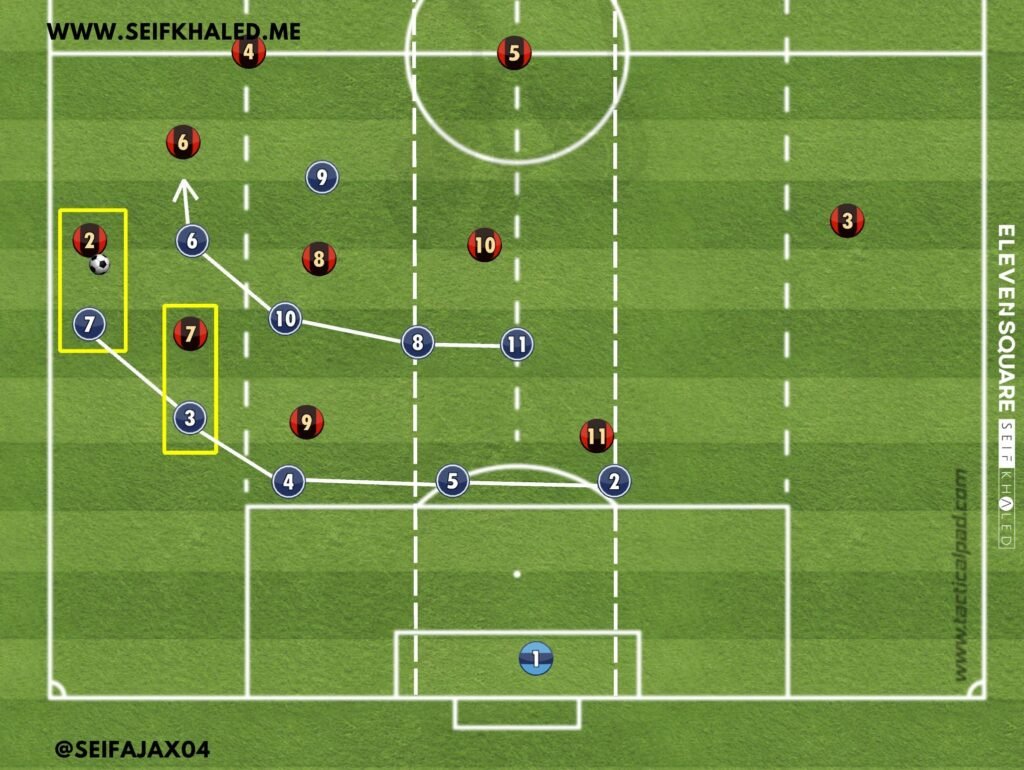

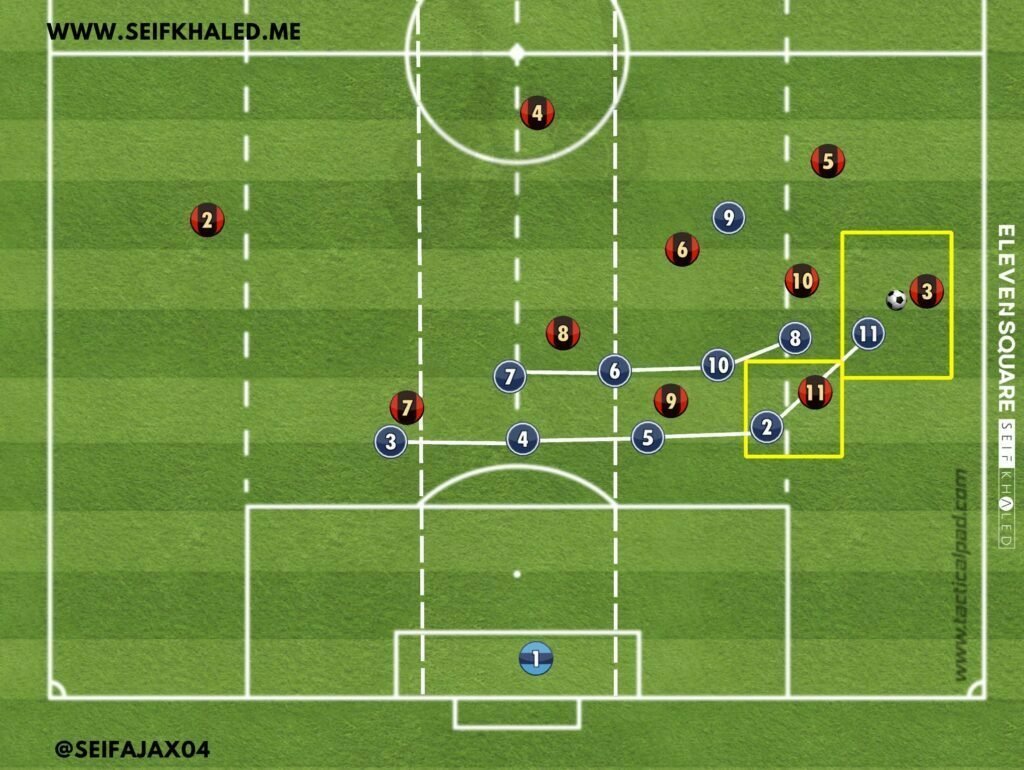
WHEN SHUFFLING INTO WIDE AREAS, THE 4-2-3-1 SHAPE CAN SHIFT INTO A SHAPE RESEMBLING A 5-4-1 WITH THE WIDER MIDFIELDER SHIFTING INTO A DEEPER POSITION TO COUNTER THE THREAT OF THE ADVANCED OPPOSITION FULL-BACK. AS AS A RESULT TO THIS, THE FULL-BACK RETAINS A MORE NARROW POSITION TO TRACK THE OPPOSITION WINGER.
Which coaches and team have used a 4-2-3-1?
Mauricio Pochettino at Tottenham Hotspur
In Pochettino’s 4-2-3-1, Harry Kane was supported by Dele Alli as a penetrative number 10 who often ran beyond the centre-forward. Son Heung-min also provided penetrative movements, but did so more often following transitions. Christian Eriksen played as a central number 10 or sometimes as one of the wide attacking midfielders, although he would move central to help the double pivot break through the opposition midfield. Kyle Walker and Danny Rose provided attacking threat from the full-back positions, overlapping to give the team width in attack (below). Meanwhile, a versatile double pivot of Eric Dier and Mousa Dembélé provided protection in front of the two centre-backs, Toby Alderweireld and Jan Vertonghen.
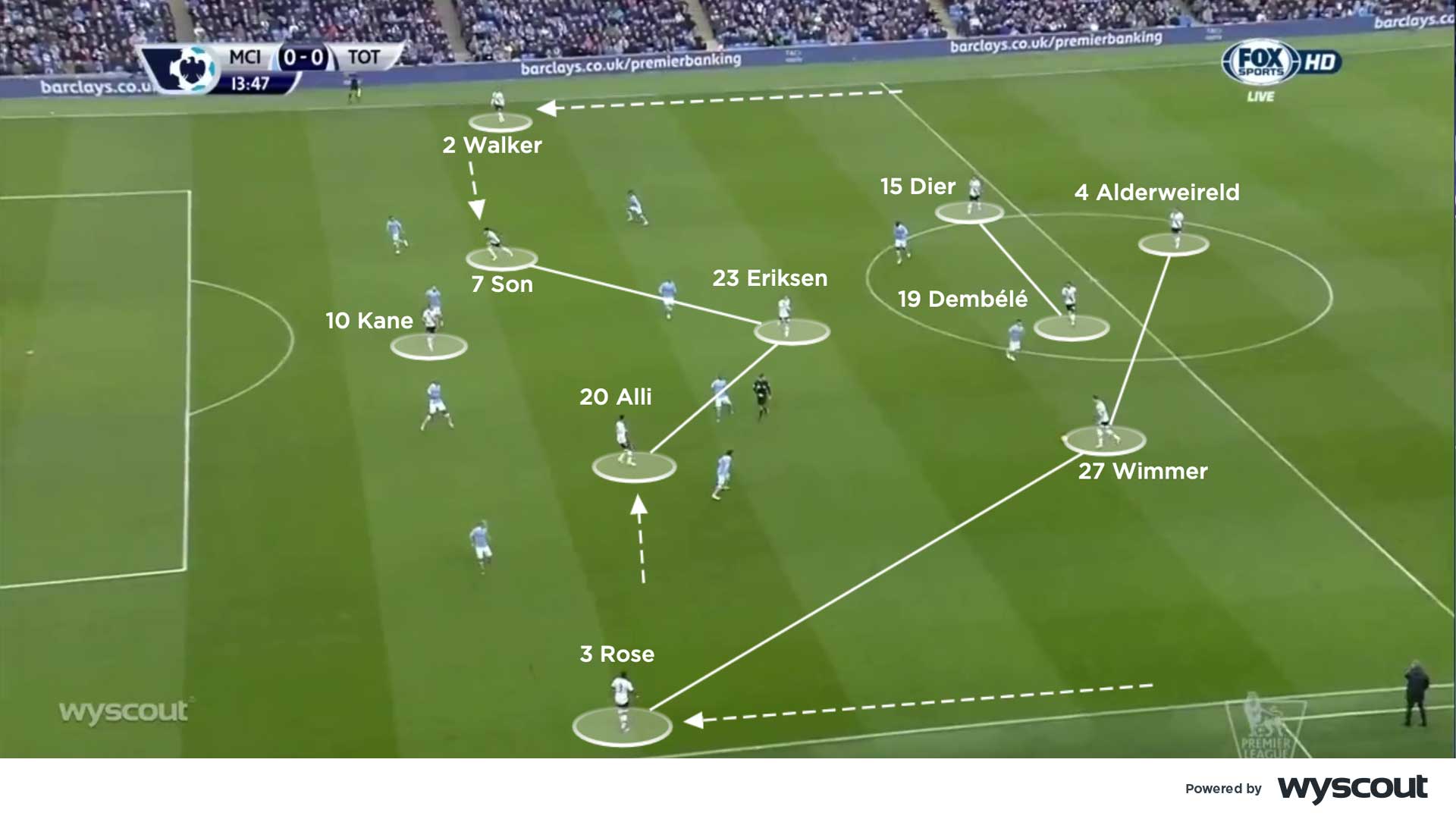
Hansi Flick at Bayern Munich
Flick’s 4-2-3-1 (below) was particularly effective in Bayern’s successful 2019/20 Champions League campaign. They beat Chelsea 7-1 on aggregate and Barcelona 8-2, having also won 7-2 at Tottenham in the group stage. Centre-forward Robert Lewandowski had support from the mobile Thomas Müller, who ran beyond the striker, provided extra presence in the box to attack crosses, and rotated with wide players Kingsley Coman, Ivan Perisic and Serge Gnabry, who moved infield towards goal. Thiago controlled the tempo of the team’s passing from his position between the back four and attacking midfield. He was paired either with Leon Goretzka, who provided penetrative runs around Müller, or Joshua Kimmich, who added a stronger defensive presence in the double pivot. This allowed both full-backs, Benjamin Pavard and Alphonso Davies, to attack simultaneously.
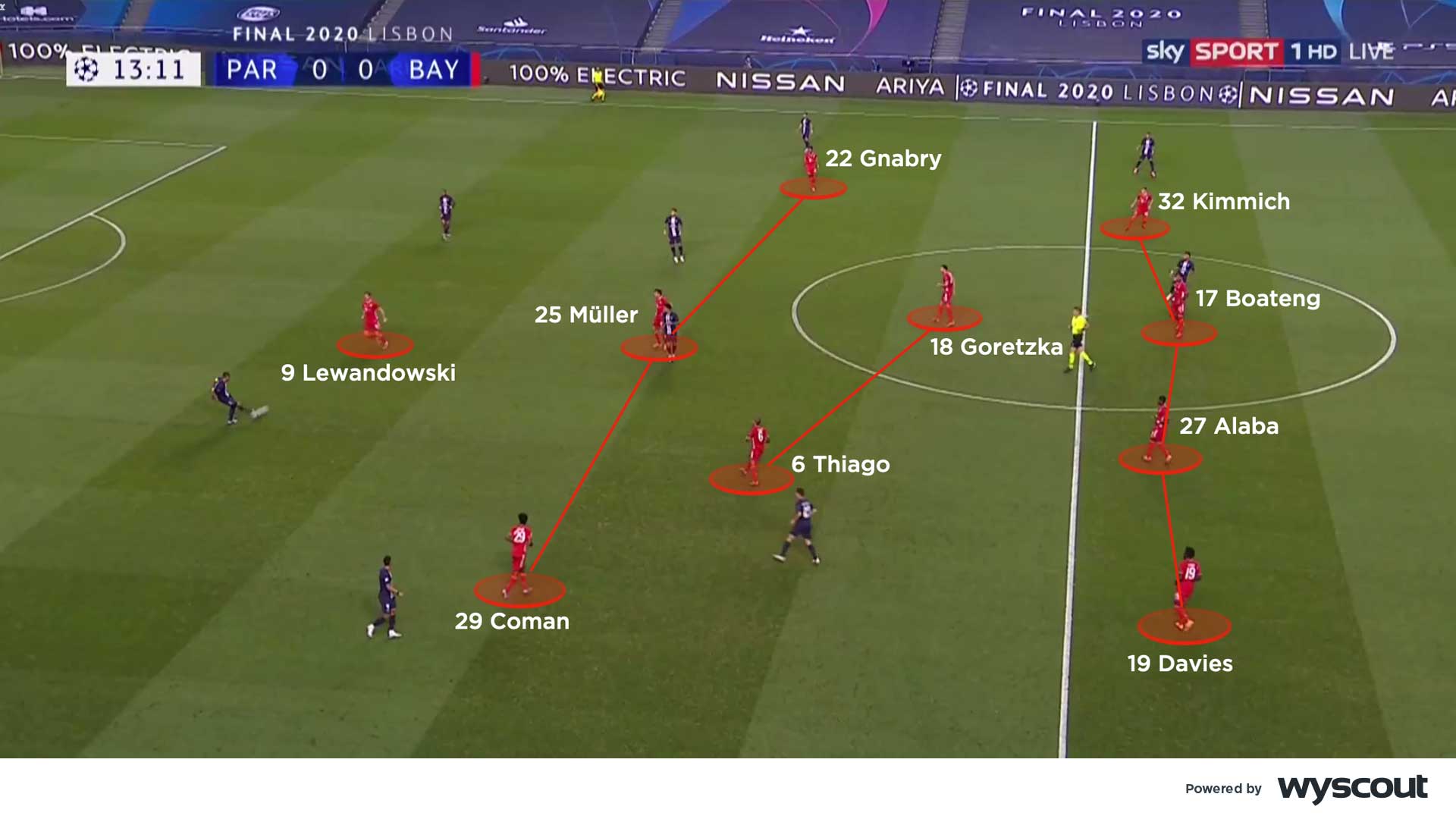
Pep Guardiola at Manchester City
In the 2020/21 season, Guardiola used a 4-2-3-1 more often than in any of his prior seasons at Manchester City. A double pivot of Rodri and either Ilkay Gündogan or Fernandinho covered the space ahead of the back four (below). The back line often converted into a three, as João Cancelo moved forward from left-back. City often attacked without a traditional centre-forward; if Guardiola went without Gabriel Jesus or Sergio Agüero, he would instead use a midfielder or winger – Raheem Sterling, Riyad Mahrez, Phil Foden, Bernardo Silva or Ferran Torres – as a false nine. Central rotations allowed Gündogan to push forward from the double pivot – often with Cancelo joining Rodri in midfield to maintain a two. Gündogan then made penetrative runs through the inside channels in the space created by the high and wide wingers.
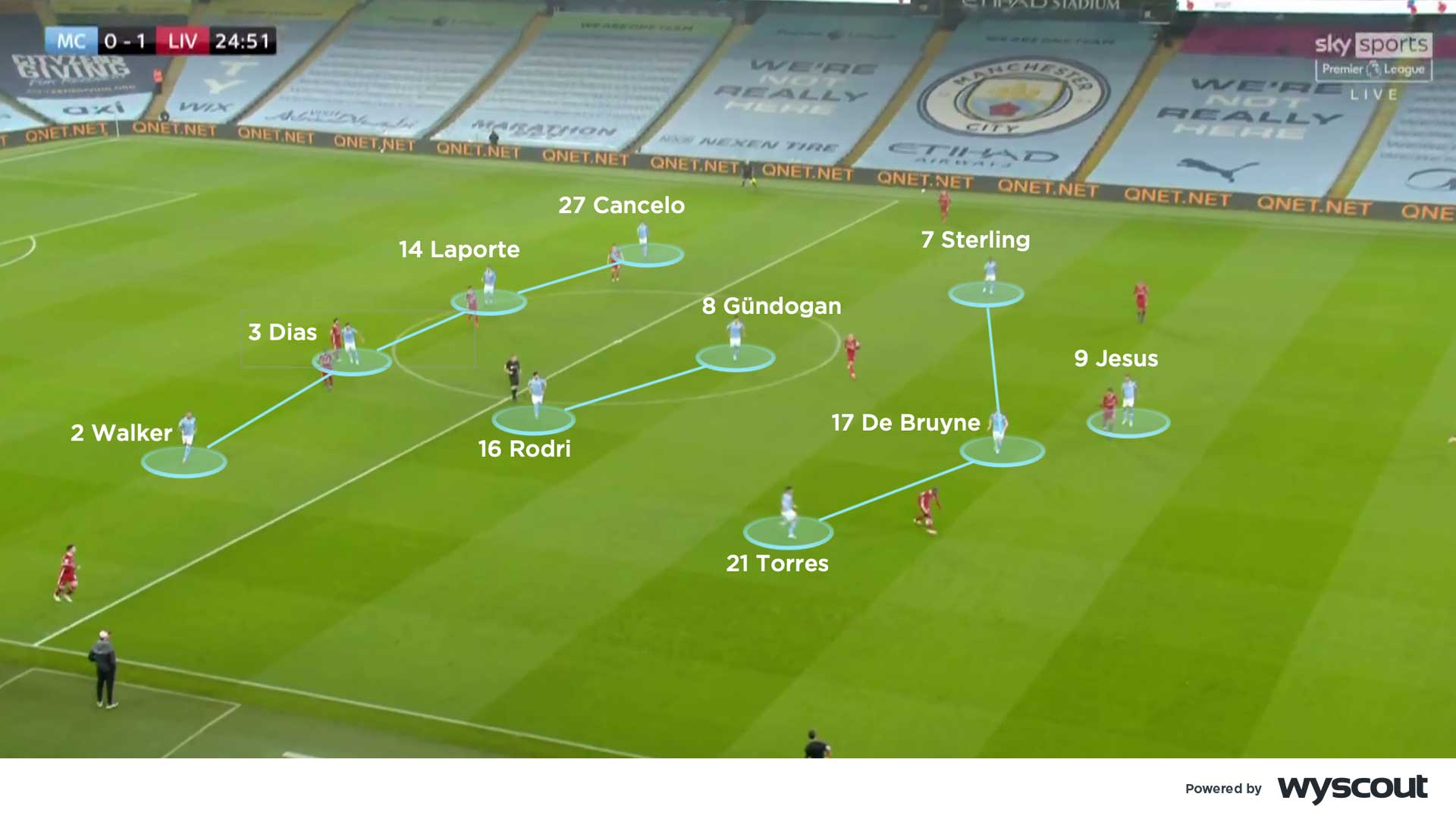
Gareth Southgate with England
Southgate has almost always favoured a double pivot with England. He has used a 4-2-3-1 both at Euro 2020 (below) and during the 2022 World Cup qualifiers. Kalvin Phillips and Declan Rice made up the double pivot whenever they were available. Both demonstrated exceptional ability to link the back line to the attacking midfield three and centre-forward Harry Kane, who often dropped into midfield. England’s attacking midfield three rotate constantly, making penetrative runs in behind as well as dropping into similar positions to Kane. Mason Mount, Jack Grealish, Jadon Sancho and Phil Foden all offer impressive ability to combine in tight spaces. Marcus Rashford and Raheem Sterling make more penetrative runs beyond the opposition back line.
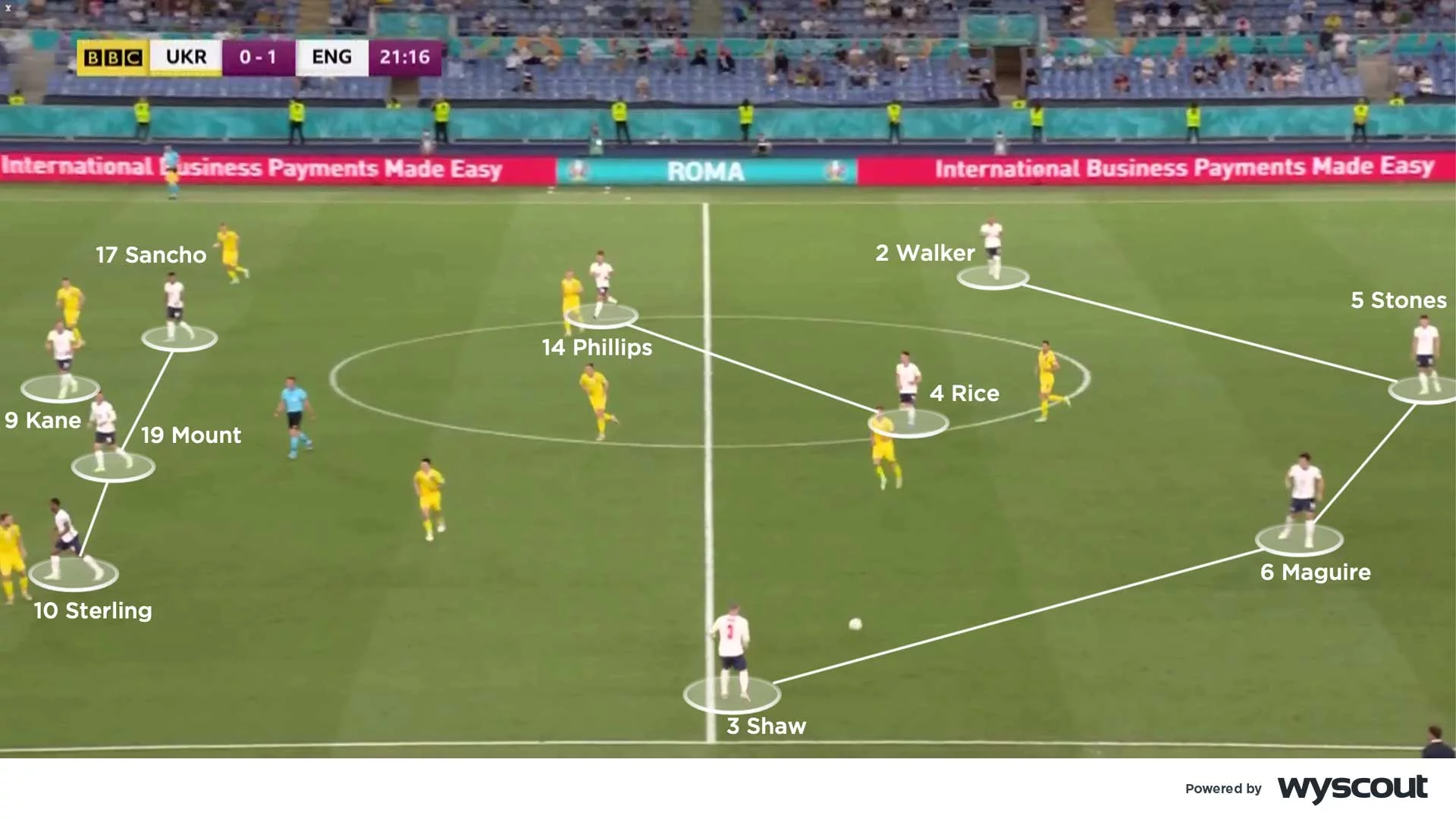
UNLOCK THE SECRETS TO [THE 4-3-3 FORMATION GUIDE] WITH OUR PDF GUIDE! DOWNLOAD NOW AND DISCOVER EXPERT TIPS, TRICKS, AND STRATEGIES . DON’T MISS OUT ON THIS VALUABLE RESOURCE – GET YOUR HANDS ON OUR PDF GUIDE TODAY.

![4-2-3-1 Formation strengths and weaknesses [Download PDF]](https://seifkhaled.me/wp-content/uploads/2023/06/slide4.webp)
Perfect formation analysis
I like it we young coaches it help to develop skills and tactics to win games
You are so cool! I do not suppose I’ve read a single thing like that before. So great to find someone with a few genuine thoughts on this issue. Seriously.. thanks for starting this up. This site is one thing that is needed on the internet, someone with a bit of originality!
I think the admin of this website is really working hard in support
of his site, because here every data is quality based data.